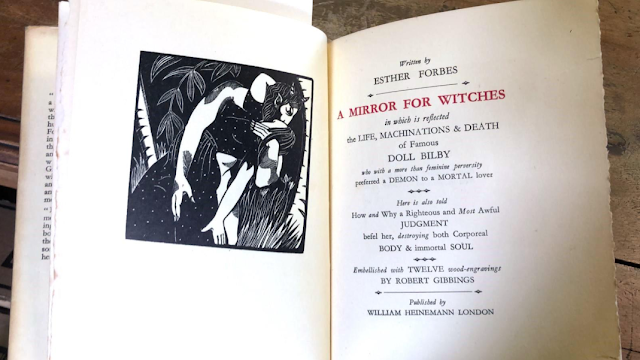Libfocus presents another post for the CONUL Training and Development Library Assistant Blog Awards 2023. The author of this post is Mona Power, Library assistant at University College Cork.
Introduction
In August 2021, I had the chance to work on a deeply intriguing project at the Crawford Art Gallery in Cork - cataloguing the contents of the gallery's library.Yes, the gallery has a library. It is located in a part of the gallery which is not usually open to the public, in a beautiful wood-panelled room filled with cabinets and curios. The collection housed within these walls is a unique mix of modern and historic books, journals, and exhibition catalogues, accumulated over the course of the Crawford’s rich and storied past.The Library Catalogue Project’s main objective was to create a complete index of this collection. This undertaking was driven by the gallery’s desire to make our cultural heritage more accessible, but also motivated by needing to prepare the gallery’s holdings for potential storage off-site during major upcoming architectural works.This blog post shares my own journey as the cataloguer on the project, highlighting the project’s key objectives, our methodology, and some of the fascinating discoveries I made along the way. |
| "Pleiades" design by J. Flaxman, engraved by William Blake. From "Compositions from the Works, Days, and Theogony of Hesiod" (1817) |
Objectives
Working under production manager Kathryn Coughlan and with guidance from consultant librarian Marie Jennings, my role on this project was to catalogue the entirety of the library’s holdings - in excess of 3,000 items.Our goal was to create a catalogue that catered to the specific needs of the Crawford Art Gallery's curatorial staff and researchers. To achieve this, I focused on creating information-rich records with particular emphasis on provenance such as inscriptions by artists, authors, and members of the Gibson and Penrose families. I also cross-referenced certain exhibition catalogues with the Crawford Art Gallery’s permanent collection, to highlight any mention of works or artists represented in it.The project’s remaining key objectives were to identify duplicate copies of library materials, identify rare and historic volumes, and categorise and re-shelve materials by subject.Also, the possibility that some or all library materials would be moved off-site required fragile materials be carefully preserved in acid-free tissue paper and archival grade boxes. |
| Hand painted colour plate from "The Botanical magazine, or, Flower-garden displayed ..." (1790-1800) by William Curtis
|
MethodologyMarie developed the methodology for this project. She determined how many collections and sub-collections were required. She designed the library catalogue in Excel, using MARC 21 Format for Bibliographic Data, so that the completed spreadsheet could be later assimilated into a library management system.We employed the Dewey Decimal Classification (DDC) system and several free cataloguing resources such as Library of Congress Authorities. Each volume received a specific call number derived from its collection, size, DDC number, and author's initials, and was shelved accordingly.DiscoveriesOne thrill of the project was regularly discovering hidden gems in the collection. Many books in the Crawford Art Gallery’s library had been waiting in their cabinets, untouched and undocumented, for decades. Among them: books published by the Golden Cockerel Press, illustrated with exquisite wood engravings by the renowned Robert Gibbings; a first (and only) edition of Cork and County Cork in the twentieth century by Rev. Richard Hodges; an early publication of philosopher Edmund Burke's seminal work A Philosophical Enquiry into the Origin of Our Ideas of the Sublime and Beautiful.
Many books in the collection were ex-library books from the Cork School of Art (now the Crawford College of Art and Design), which at one time resided in the gallery’s building at Emmett Place. These books came with all manner of library stamps and donation labels, as well as marginalia, personal notes, and letters left behind by 20th Century art students.Another unforgettable find was discovering a collection of prints by the artist Estella Solomons, hidden at the back of a locked cabinet. These prints were considered missing from the gallery’s collection for some time. The joy of reuniting these works with the registrar was an unrivalled highlight, and a testament to the significance of our project.
Many books in the collection were ex-library books from the Cork School of Art (now the Crawford College of Art and Design), which at one time resided in the gallery’s building at Emmett Place. These books came with all manner of library stamps and donation labels, as well as marginalia, personal notes, and letters left behind by 20th Century art students.Another unforgettable find was discovering a collection of prints by the artist Estella Solomons, hidden at the back of a locked cabinet. These prints were considered missing from the gallery’s collection for some time. The joy of reuniting these works with the registrar was an unrivalled highlight, and a testament to the significance of our project.
 |
| A first edition of "The Year's at the Spring", an anthology of poetry illustrated by Harry Clarke (1920) |
Conclusion
Cataloguing the Crawford Art Gallery's collection of library materials was an enriching experience, made possible by a tailored approach and close collaboration with gallery staff. Recording provenance details, cross-referencing exhibition catalogues, and preserving fragile volumes contributed to the preservation and accessibility of the gallery's collection. The resulting catalogue will undoubtedly prove an invaluable resource for future generations of art enthusiasts, researchers, and curators. With the architectural works on the horizon, I am confident this project contributed to the safeguarding of the collection for the gallery's exciting future. |
| "A Mirror for Witches" by Esther Forbes (1928), with woodcuts by Robert Gibbings. |
AcknowledgementsThroughout the project, I had the privilege of working closely with Kathryn Coughlan and Marie Jennings. Kathryn's expertise and Marie’s guidance were invaluable in ensuring that the cataloguing process aligned with the gallery's vision and requirements.




0 comments:
Post a Comment